FOR THEIR graduation collection, students of Slim’s Fashion & Arts School were given this simple brief: to discover the 1960s and create clothes inspired by the decade.
One could easily Google images of Audrey Hepburn in “Breakfast at Tiffany’s” or the mod look made popular at the time by young British men, but ’60s fashion was much more than that. As the mentors of Slim’s students reminded them, “Not everything exists in cyberspace.”
One mentor, Slim’s codirector Mark Lewis Higgins, says that we have reached a point where fashion has become cyclic. “How would you know how to reinvent something if you do not know where it came from?” he says.
Thus, the task was to research on the decade—when none of the students had been born yet.
They were also reminded by their mentors that “research should not be a chore. The journey to discovery should be fun.”
It helps to know that the school has a library filled with vintage copies of Vogue, Harper’s Bazaar and other magazines from the ’60s to help jump-start the students’ journey.
Interestingly, it was Vogue editor in chief Diana Vreeland who coined the word “youthquake” to describe the decade when teenagers had a major influence in art, music, fashion and culture. The ’60s also spawned the term “street fashion” to describe the fun and free styles that the youth preferred to the glamorous fashion of the ’50s.
Based on these designs—and the skillfully executed garments, a trademark of Slim’s education—it looks like the students enjoyed the journey a lot.
Designed by Anj Ong
G.I. Joe was first produced in the ’60s as the male version of the ’50s Barbie doll. This dress, influenced by the two iconic figures, is also a reflection of today’s woman: feminine, strong, a fighter. The skirt is made of camouflage print fabric embellished with sequins.
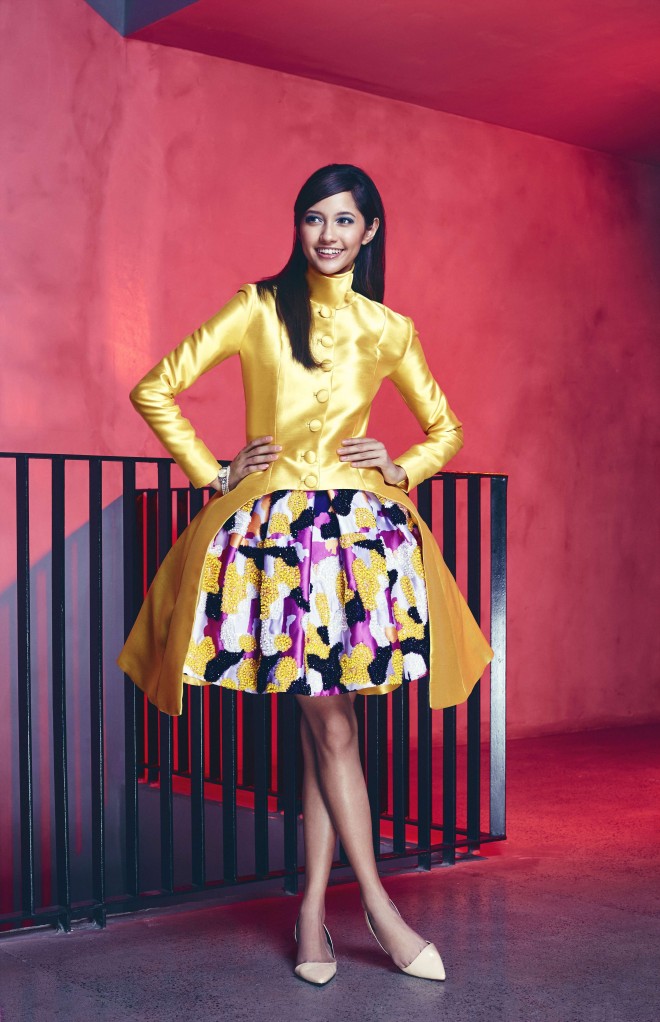
Designed by Con Andres
A classic ’60s silhouette embellished with gold safety pins. The dress is inspired by fashion experiments with hardware (metal squares, discs, chains, brass buttons, clamps) and the decade’s rising hemline.
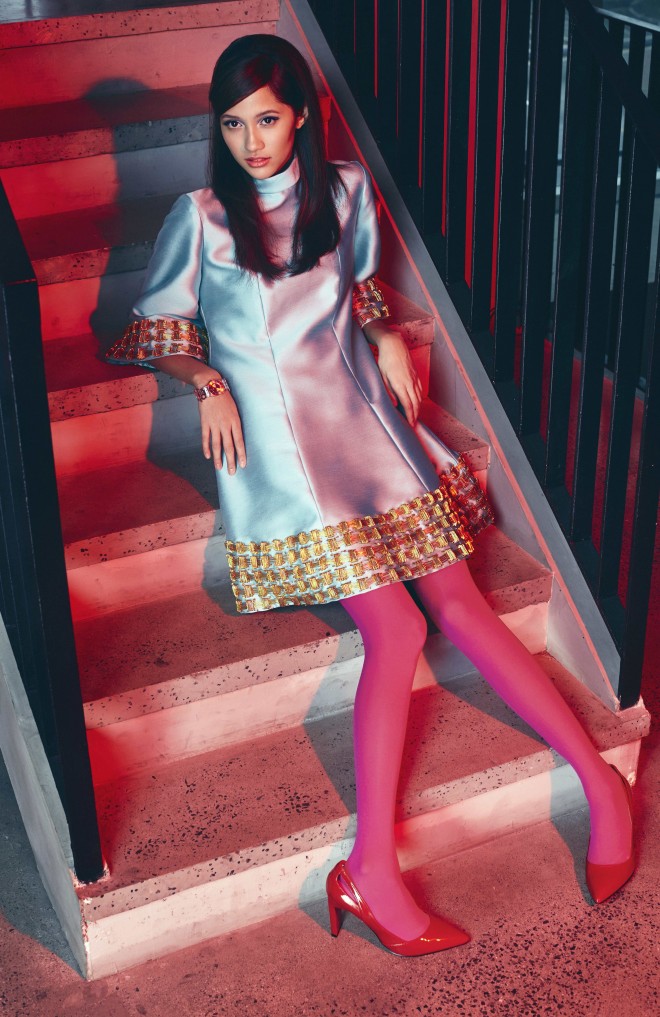
Designed by Iviane Santos
A popular material in the ’60s, plastic was then finding its way into fashion. This ’60s-style trapeze cape in plastic and metal grommets is a nod to that trend.
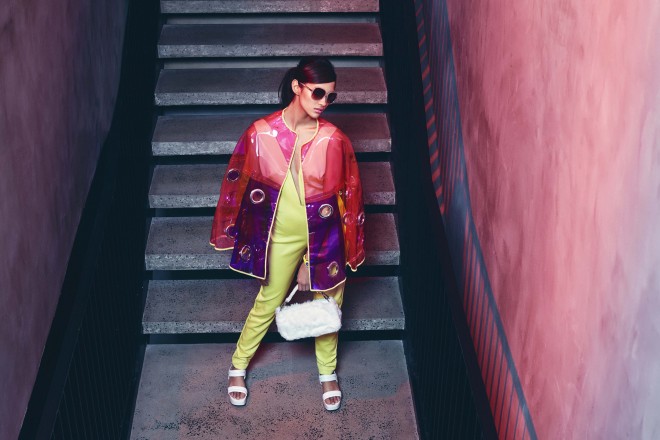
Designed by Nela Fornier
Inspired by “Flower Power”—a slogan used during the late 1960s as a symbol of passive resistance and
antiviolence ideology. This stiff, flared ’60s silhouette has handmade organza flowers created by the student.
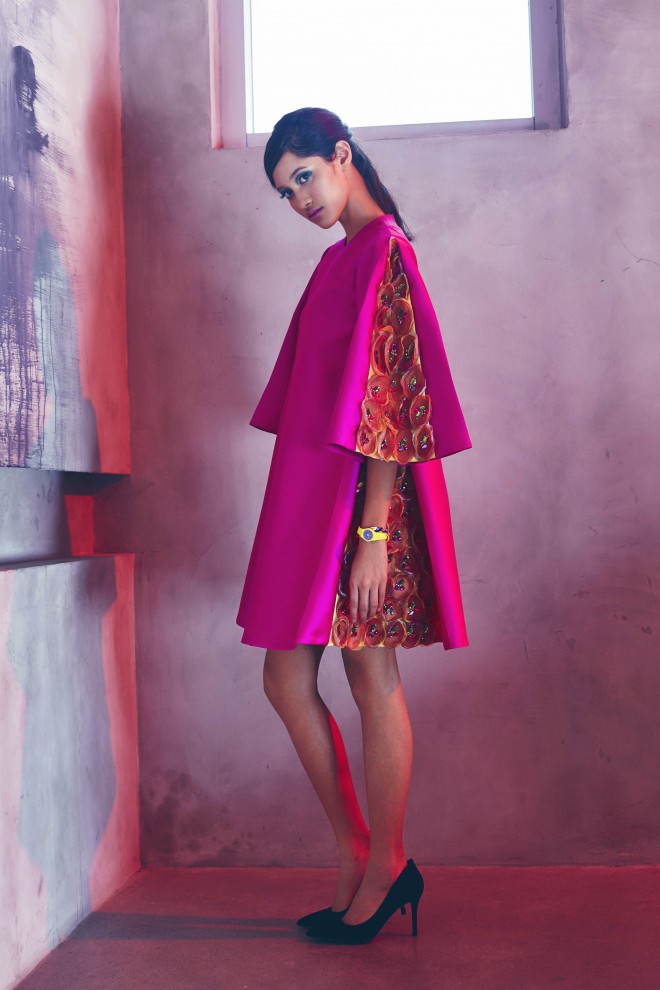
Designed by Karen Gail Olaño
A semimetallic, textured A-line/shift dress with high-neck leatherette collar, geometric keyhole at
the front, a cowl back and textured leatherette straps takes its cue from the clean lines and experimental materials popularized by the mod look.

Designed by Ray Ann Gutierrez
The A-line silhouette’s lace-up detail highlights the rising popularity of sneakers. Before the ’60s, the sporty shoe was considered an outsider on the fashion scene.
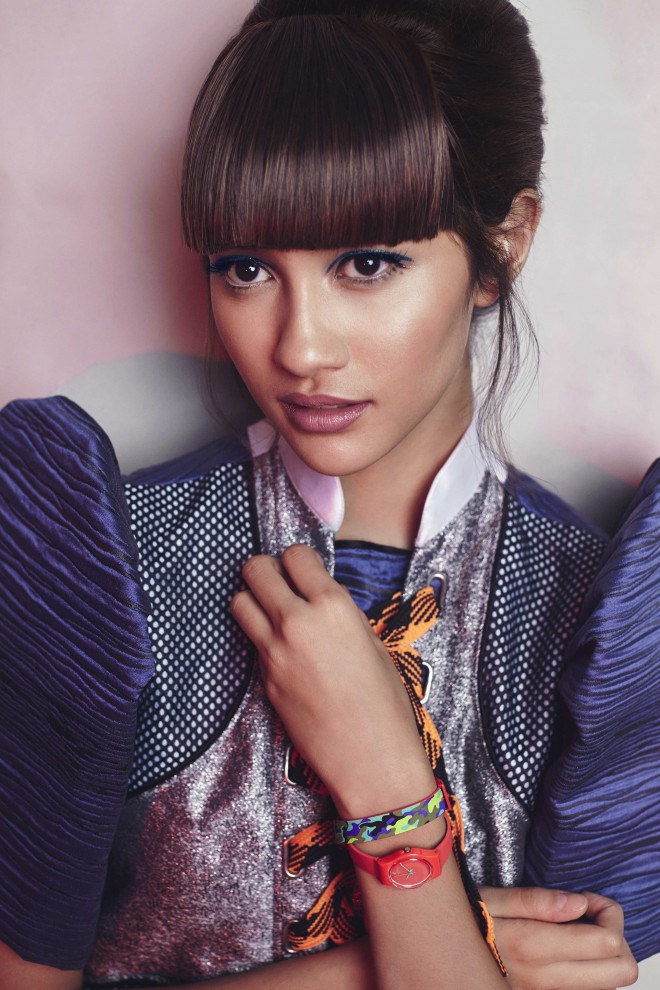
Photography Gee Plamenco
Styling Luis Carlo San Juan
Makeup Anacleta Paredes
Hairstyle Ethan David
Model Sabina Gonzalez
SHOT ON LOCATION SWATCH+SWATCH CENTER, ARNAIZ AVENUE, MAKATI
Visit us on Instagram InquirerToBeYou; Facebook: 2bU; e-mail [email protected]












































